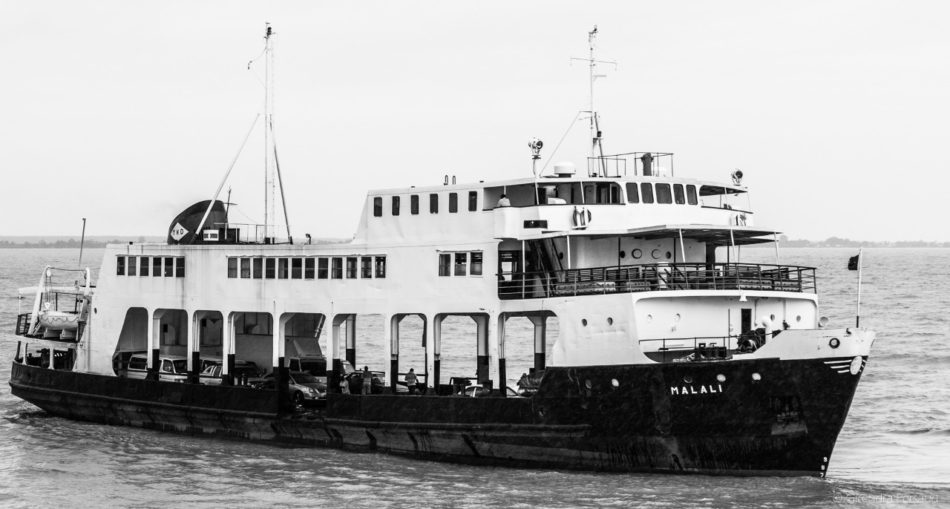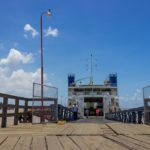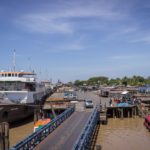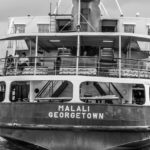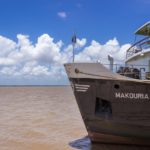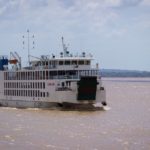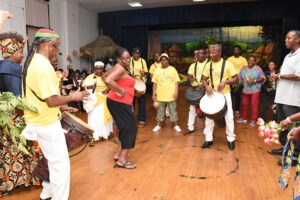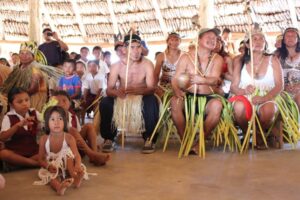In British Guiana, one of the most common sights was a ship, slowly chugging along the coast, emitting wisps of smoke. These vessels were powered by steam, a very common thing during this era. Transportation in British Guiana was primitive as there were limited transportation options. Before the diesel-powered vessels of the current century, the Steam Vessels were king. A Steamer Service was introduced to British Guiana by the government in an effort to develop sea transportation in Guyana while transportation on land was upgraded with the establishment of railways across the country. The Demerara Railway ruled the land, and the Steamer Service likewise, governed the seas. As the world slowly transitioned from sailing ships to vessels powered by steam, Guyana did the same. At the turn of the 20th century, Steamers became outdated and some of these vessels were upgraded to run on diesel. To date, some ships like the M.V. Malali, M.V. Torani and M.V. Pomeroon remains in service. Read on to find out about the Steamer Service of British Guiana.
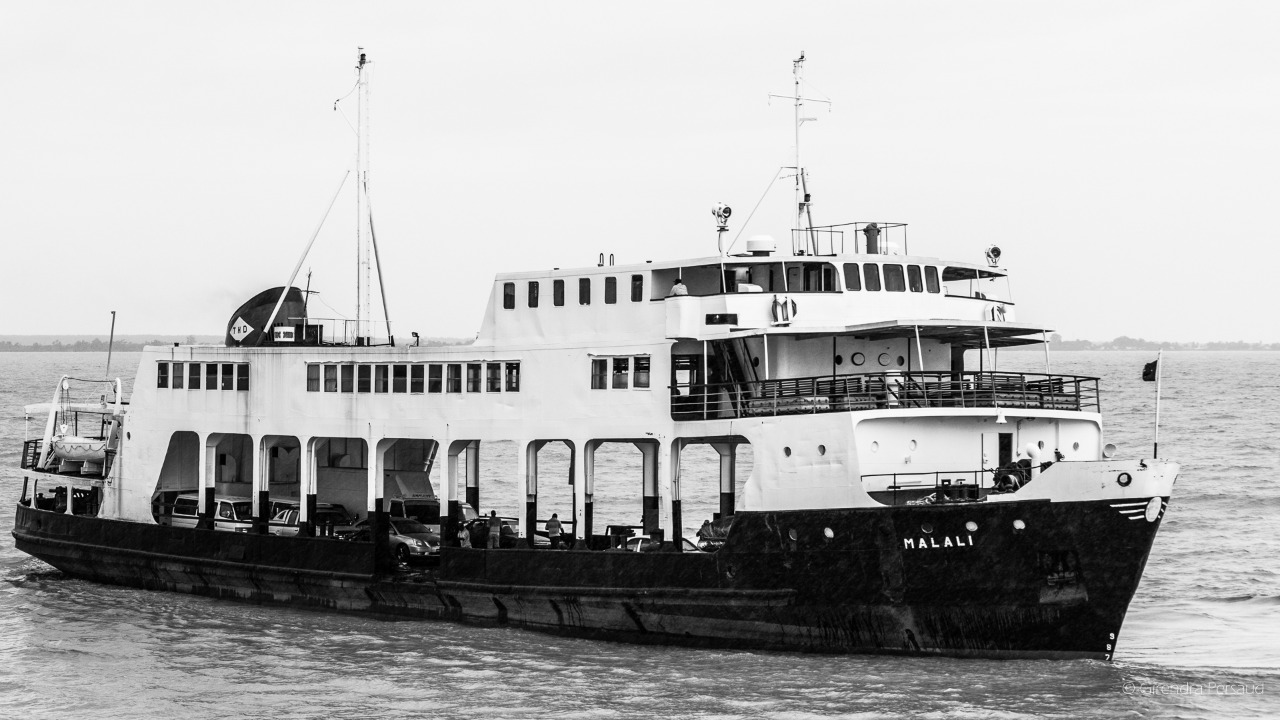
Steamers of Guyana
A Steamer typically is a ship, boat, which is powered by steam. In Guyana, these vessels powered by steam traversed the many waterways of our country. Some of the most popular Steamers were the Oranjestaad, Lady Northcote, Powis, Canje Pheasant, Pomeroon, Barima, Lady Berbice, Mazaruni, Makouria, Torani, and Lukanani. Some of these vessels which were powered by steam was later converted and operates on diesel. These Steamers ferried people and goods alike across the numerous rivers in Guyana.
Guyana’s Steamer Service originated sometime in the early 19th century however it was in 1825 with the establishment of a Local Steamer Navigation Company that a Steamer Service in Guyana was first documented. The government of British Guiana at first assigned a contract to privately owned steamers which accommodated the shipping of produce and transportation of passengers. These Steamers were divided into first and second class with the costs being $2 and 48 cents respectively during the 1880s.
The older generation may recall the travels aboard the Steamer boats in Guyana however, around the 1970s, Steamboats were almost outdated. Many Guyanese to date call these vessels, “steamers” even though most have been modified to use diesel. In Essequibo, they are referred to as “Big Boat” perhaps because of their immense size and capacity when compared to speedboats. These Steamers or rather diesel-powered vessels now operate under Guyana’s Transport and Harbour Department. You may recognize some of the names like Malali, Torani, Lady North Cote.
In 2012, two vessels the M.V. Kanawan and M.V. Sabanto were gifted to Guyana by the government of China and currently operate the Parika-Supenaam route in the Essequibo River.
- Parika Stelling
- Parika Stelling
- MV Malali
- MV Makouria
- MV Kanawan
History of the Steamers Service in Guyana
Steamers were first introduced to British Guiana sometime in the nineteenth (19th) century. This introduction made way for the new technology and outdated sailing ships and vessels. The Local Steamer Navigation Company began its operation with a vessel called Cambria, formerly an immigrant ship which was purchased for $50,000. Shortly after on August 24, 1828, the colonial authorities of British Guiana introduced the steamer service across the Demerara River.
Perhaps the thing that propelled the then British Guiana to its days of glory, was the establishment of Sprostons Limited, a shipping business owned by Hugh Sproston born in 1819, Gibraltar. Sproston was key in the foundation of Guyana’s shipbuilding and repair service and is embedded in our country rich history.
Hugh Sproston came to Demerara in 1840 to manage the business of his employer, a London shipowner, who he worked for since he was fifteen (15) years of age. Five years after working in Demerara, Sproston opened his own shipping merchant business.
During the first years of British Guiana Steamer Service, Sproston noted there was no ship repairing docks and requested engineers from Great Britain and the United States of America to survey suitable areas in Guyana. A plot of land in Charlestown, large enough to accommodate ships with a length of two hundred (200) feet long and weights of eight hundred (800) tons. The venture, however, left Sproston almost bankrupt with the breaking of the cofferdam, a watertight enclosure build under the waterline that is needed in the building or repairing of ships.
Regardless, Sproston persisted and on 26 October 1867, the Sproston’s Dry Dock was declared opened by Governor Hincks and his wife. The first steamer build by the Sproston’s Dry Dock was The Sproston Creole, which began operations on 11th December 1878. Steamers like Amy (1886), Horatio (1886), and the
New Amsterdam (1887) were added to support the ferry service of British Guiana. Some of Sproston’s other ships were Berbice which was constructed in 1859, Georgetown (1873), Lady Longden (1876), Princess (1876), Guiana (1879), Charlestown (1880), Sproston Wood (1881), and Cuyuni (1883).
For a long time, the Sproston Dry Dock ruled the sea but its nationalization marked the end of the dynamic era of British Guiana’s shipbuilding industry. About a decade after Guyana gained independence from Great Britain the Sproston company was nationalized under Guyana National Engineering Corporation (GNEC). The Guyana National Engineering Corporation was later renamed the Guyana National Industrial Company Inc. (GNIC) and has since expanded its service to marine vessels used in the agriculture, transport, mining, fishing, construction, and housing sectors.
In the year of 1922, the Colonial Steamer Service became the Government Steamer Service and was later merged with the Demerara Railway which formed the Colonial Transportation Department.
Route of Steamers in Guyana
The government of British Guiana contracted several vessels like the Eluza, Gertie, Elfreda, Piranah and Malali (which currently operates the Wakenaam route) from Sproston company. In 1881, services expanded to reach Demerara River to Lucky Spot and along the Berbice River from New Amsterdam to Commacka. The Lady Flora Hasting was also contracted in the same year when the route was expanded to Leguan Island.
The M.V. RH Carr, named after Ralph Hamilton Carr, operated the Georgetown to Upper Demerara route. Gradually the Steamer Service of British Guiana was brought to its end. The very last steamer to traverse the Linden-Georgetown route was the M.V. RH Carr, named after Ralph Hamilton Carr and lays decaying at Skull Point, Cuyuni River.
The Steamer Service of Guyana
Sailing vessels became a thing of the past with the introduction of steam-powered vessels in British Guiana, however, these very steam vessels became defunct with new technology. During the steam-powered era of British Guiana, the Sproston’s Dry Docks dominated the shipbuilding and repair sector as well as the Steamer Service of British Guiana. It continued to do so, until was nationalized about ten (10) years after Guyana gained independence. After this, many of the vessels were converted from steam-powered to engines which were fuelled by diesel. These included the M.V. RH Carr which converted to diesel in the 1950s and MV Malali. The Malali, Makouria, and Torani are some of the “Big Boats” that remain functioning to date. These along with many more vessels operate under the service of Transport and Harbour Department, formerly the Colonial Steamer Service which was merged with the Demerara Railway to form the Colonial Transportation Department.
Article References
- https://ohbeautifulguyana.files.wordpress.com/2014/05/steamers-of-british-guiana.pdf
- https://guyaneseonline.net/tag/steamers-of-guyana/
- https://www.stabroeknews.com/2011/06/19/features/memory-lane-8/
- https://www.kaieteurnewsonline.com/2012/01/15/two-chinese-ferries-officially-handed-over-to-guyana/

